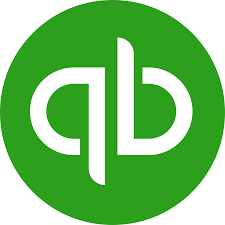- 1-905-452-8193
- Contact Us
- Member Login
- Get Listed Today
- 220,911 members

How To Set Up Payroll In QuickBooks
Setting Up Payroll in QuickBooks: A Step-by-Step Guide for Seamless Payroll Management
Introduction:
Payroll management is a critical aspect of running a business, and QuickBooks provides a comprehensive platform to streamline this process. In this guide, we will walk you through the step-by-step process of setting up payroll in QuickBooks, ensuring 1-888-803-7027 accuracy, compliance, and efficiency in managing your employees' compensation.
I. Getting Started:
Accessing Payroll Features:
Introduction to the payroll features available in QuickBooks.
Navigating to the Payroll Center in QuickBooks.
Choosing the Right Payroll Plan:
Overview of different payroll plans offered by QuickBooks.
Selecting the plan that aligns with your business needs.
II. Employee Setup:
Adding Employees:
Step-by-step guide on how to add employees to QuickBooks.
Entering essential employee information, including name, address, and tax details.
Employee Classifications:
Defining employee classifications.
Understanding how classifications impact 1-888-803-7027 payroll processing.
III. Payroll Tax Setup:
Setting Up Payroll Tax Preferences:
Configuring payroll tax preferences based on your business location and requirements.
Ensuring compliance with local and federal tax regulations.
Employee Tax Withholding:
Managing federal and state tax withholdings for each employee.
Understanding the importance of accurate tax calculations.
IV. Compensation and Benefits:
Wage Setup:
Configuring different types of wages.
Handling special pay situations .
Benefits and Deductions:
Adding employee benefits and deductions to payroll.
Managing health insurance, retirement 1-888-803-7027 contributions, and other deductions.
V. Payroll Schedule:
Setting Up Payroll Schedule:
Defining the frequency and timing of payroll runs.
Ensuring consistency and compliance with labor laws.
Processing Payroll:
Step-by-step guide on how to process payroll in QuickBooks.
Verifying hours worked, making adjustments, and generating paychecks.
VI. Direct Deposit Setup:
Enabling Direct Deposit:
Setting up direct deposit for employees.
Ensuring the security and confidentiality of direct deposit information.
Processing Direct Deposit Payroll:
Initiating and processing direct deposit payments.
Verifying successful direct deposit transactions.
VII. Payroll Reporting:
Generating Payroll Reports:
Overview of the payroll reports available in QuickBooks.
Analyzing reports for insights into labor costs and compliance.
Year-End Reporting:
Preparing for year-end payroll 1-888-803-7027 reporting.
Generating W-2 and 1099 forms for employees and contractors.
VIII. Compliance and Record Keeping:
Compliance Checks:
Regularly auditing payroll processes for compliance.
Staying informed about changes in tax laws and regulations.
Record Keeping Best Practices:
Establishing a systematic approach to record keeping.
Retaining necessary payroll documentation for auditing purposes.
Conclusion:
By following this step-by-step guide, you can confidently set up payroll in QuickBooks, ensuring accurate and compliant compensation for your employees. Payroll management becomes a seamless and efficient process, allowing you to focus on growing your business while maintaining confidence in your financial operations. Regularly updating payroll information, staying informed about regulatory changes, and leveraging the reporting features of QuickBooks will contribute to a smooth and error-free payroll experience.
